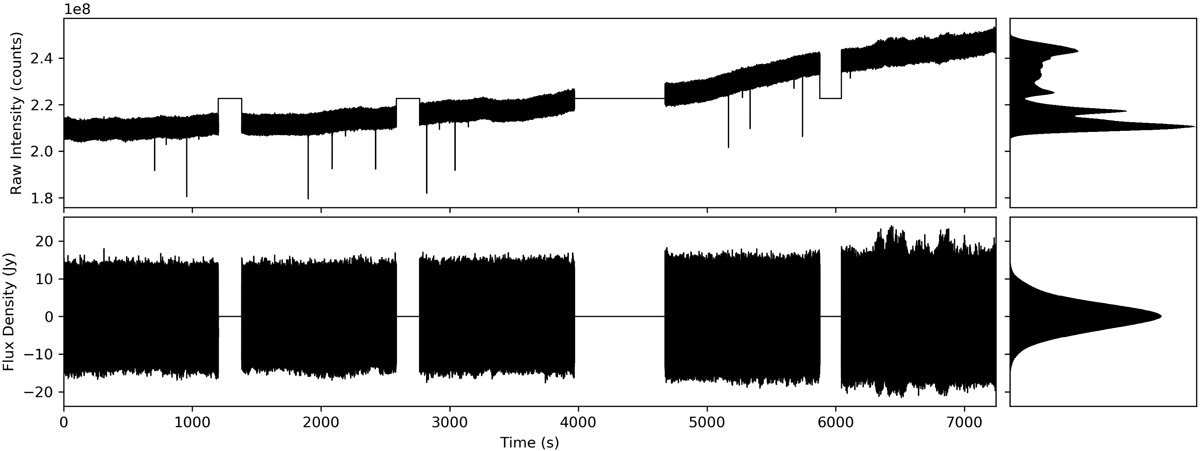Fig. 1.

Visualisation of an example time series of the data from EMIR plus BBC before (upper panels) and after (bottom panels) the processing presented in Sects. 3.1 and 3.2. The processing includes calibration, data cleaning, and preparation prior to the pulsar searching. Upper left panel: raw data as recorded by the BBC during an observation consisting of five scans of 20 min each during a total time span of about 2 h. The atmospheric opacity variations and the sporadic intensity drop-offs are apparent. The gaps in between scans show intervals when the telescope was not observing the Galactic centre, e.g., in the course of calibration scans, or pointing and focus adjustments. Upper right panel: histogram with the distribution of the count levels through the observation, showing that it is not ideal to use the data directly in this state for statistics-based algorithms such as the pulsar searching. Bottom left and bottom right panels: same time series after the processing. The slow level variations and the intensity drop-offs are corrected for. Furthermore, the intensity scale at this stage is calibrated in Jansky, which is necessary in order to correctly combine the different polarisations and frequency bands. Bottom left panel: slight increase in the standard deviation of the noise toward the end of the observation. This is because the Galactic centre decreases in elevation on sky, which forces the telescope to observe through a larger amount of atmosphere (or airmass), thus increasing the system temperature. The data shown correspond to the 102 GHz frequency band from 2017 September 28. This epoch was chosen to illustrate a case with a high opacity and thus a high system temperature, which typically is more challenging to clean.
Current usage metrics show cumulative count of Article Views (full-text article views including HTML views, PDF and ePub downloads, according to the available data) and Abstracts Views on Vision4Press platform.
Data correspond to usage on the plateform after 2015. The current usage metrics is available 48-96 hours after online publication and is updated daily on week days.
Initial download of the metrics may take a while.


